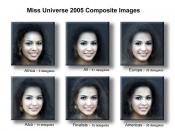Member of different generations and exposed to different cultural and socialization experiences, my mother and I have different conceptions of the ideal mate. Born and raised in the Philippines in the 1950's, my mother's idea of the perfect mate is quite reflective of her social environment; this differs from my experiences as a child of the eighties raised in Canada. Although we are both women, the social construction of womanhood as well as the cultural reality we have both respectively encountered represents dramatic contrasts. In this paper, I will be examining and demonstrating the differences in our respective processes of acculturation and socialization by looking at the perceptions we have regarding the ideal mate. Offering important insights into the process of socialization, the social constructivist theory proves useful in analysing how both my mother and I are products of our social environment and how this shaped our conception or depiction of the perfect mate.
While this comparison is one that demonstrates considerable contrasts, there are also some meaningful similarities between these ideals.
Social Constructivism
The social constructivist perspective is one that seeks to understand how our experience is constructed through our interaction with culture and society. According to Ambert (2006), "...various phenomena that are taken for granted and seem natural are actually culturally defined or socially constructed" (p. 18). In terms of the social construction of a woman's ideal mate, there are social, economic, political, aesthetic and interpersonal influences that construct this ideal in our minds. Certainly, my mother grew up in a period that represents a different culture than the one I have experienced. Even today, though we inhabit the same society, she is a member of an aging adult culture known as the 'Baby Boomers', while I am a member of a culture that has been referred to...


